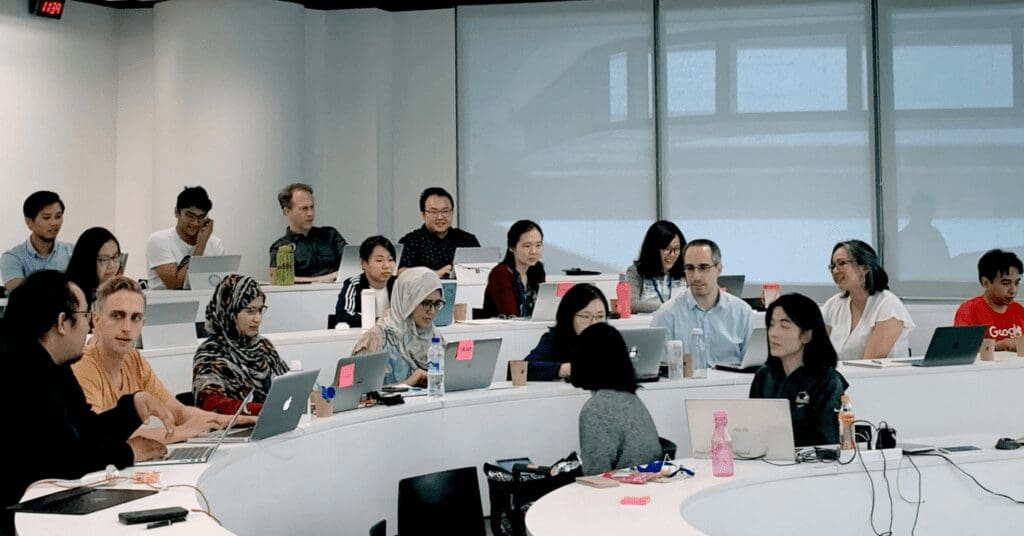The Shift Towards Non-Traditional Education Models
ascascascas
If I was writing this article in the 20th century, “non-traditional” schooling would reference alternatives to public schools like Montessori education, charter schools, or Expeditionary Learning programs. All three represent both the historical trend to offer variety in the way schooling happen and, through their growth, the normalizing of projects once labeled as “non-traditional.”
Now in the 21st century, the current educational landscape has its equivalents to the aforementioned options. Although still often labeled as “non-traditional” these three models, homeschooling, virtual learning, and micro-schools, have attracted a significant number of learners and educators to their format. As you work with school systems, I encourage you to inquire about each model’s popularity and how they are impacting funding, enrollment, and policy.

To that end, the summaries below share experiences I have had with each non-traditional setting in my school district. Combined with some national data, sections are meant to help develop your understating, formulate inquiries, and refine strategies with traditional and non-traditional schools you work with now or in the future.
- Home schooling allows parents to teach their children at home instead of sending them to a school. This approach has become the fastest-growing non-traditional approach to education in the United States. In 2019, for example, The National Center for Education Statistics’ last official federal estimate reported that there were 1.5 million children being home-schooled in the nation. My district’s experience with home-schooling supports the national trend. Remote learning during the two years of the COVID pandemic accelerated the trend, which had been regulated mostly to elementary and middle school, to our high schools. It is important to know that home schooled students are eligible to partake in student activities and sports as well as special education support..
- Virtual Learning: Due to the development and proliferation of digital technologies, virtual education has become a normalized form of teaching and learning. the National School Choice Week 2021 report (updated in January 2024) outlines each state’s virtual learning program. The district I work for is large enough to have its own, internal Online Campus. This program offers online courses for high school students in every content area including Health and Physical Education, World Languages, and Art. Additionally, students engage in two other virtual learning experiences. The first, also supported by my district, provides credit recovery opportunities through a contracted third party. In additional to remediation, home bound (not home schooled) students also utilize this service. Secondly, students tap into state funded virtual learning for credit advancement during the summer. Unlike our Online Campus, students pay for course work that provides credit advancement.
- Micro Schools are small, private institutions that meet in commercial venues, nonprofit space, private residences, and religious affiliated buildings. Located in Las Vegas since 2022, The National Microschooling Center’s website reports that 30 states have micro schools operating in them schools serving between 1 – 2 million learners. Unlike the first two non-traditional models above, “micro-schools” are less popular in my district. However, during the pandemic, a few emerged dedicated to students in grades K-8. One possible variable impacting the dearth of this model is the number of services my district provides to families. As a county system (as opposed to a city or town model) services are provided with greater frequency and equity across a lager geography.
In the state where I live, Virginia, all three of these “non-traditional” approaches to schools exist in varying forms and with different models across the state. Working in a field that promotes the value of personalized learning and laments “one way for everyone” in education, this is not surprising. In turn, you and your organization should continue to work within the complexities that come with varied educational formats and expect that soon these approaches, like their earlier counterparts, will be commonplace.

Written by: Craig Perrier
Educational Thought Leader and Practitioner
Craig is the High School Social Studies Curriculum and Instruction Specialist for Fairfax County Public Schools in Fairfax, VA. He also is an online adjunct professor of education for Framingham State University and the teacher certification program, Educate VA. Previously, he taught at American Schools in Brazil for six years and for six years in public schools in Massachusetts.
Interested in learning more about the education market, or looking to contribute? We want to hear from you!